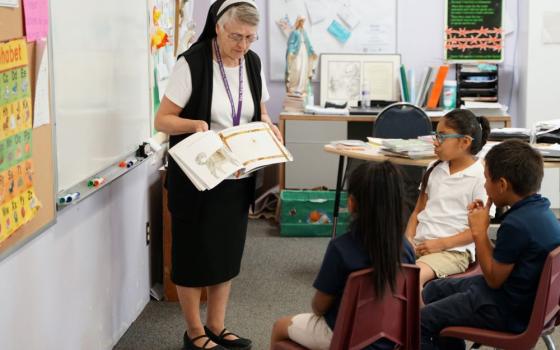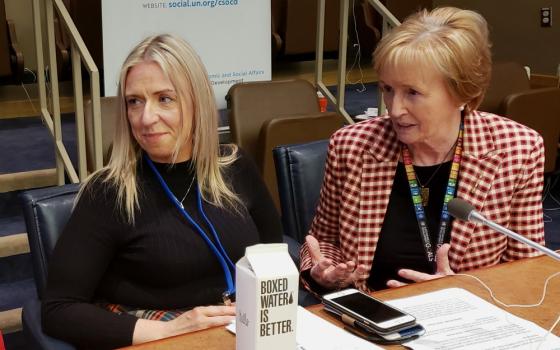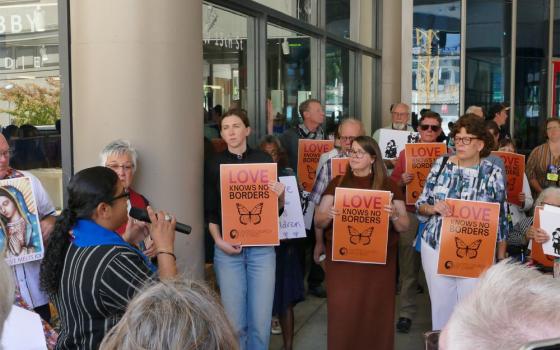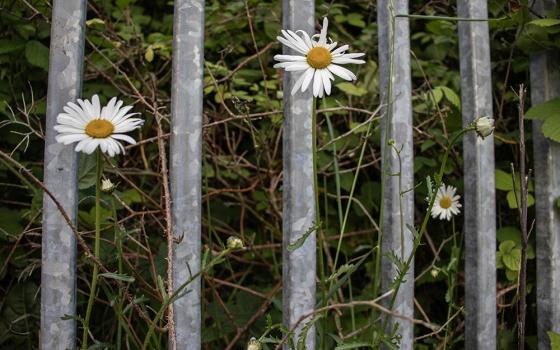Sisters of Compassion Sr. Alphie Kidangen (left) stands with Sr. Nirmala Joshi, then superior general of the Missionaries of Charity, at Shanthi Nilayam, a center for children at Bonakal village in Telangana, a southeastern Indian state in 2011. (Courtesy of Alphie Kidangen)
Sr. Alphie Kidangen left Mother Teresa's Missionaries of Charity in 1999 after more than a decade of service to help the poor in their homes. She later founded the Sisters of Compassion, a diocesan congregation.
Kidangen has earned recognition from the government of Telangana and the Catholic Hospital Association of India for her home-based care. She spoke to Global Sisters Report in January about her evolving vocation, model of evangelization and the risks and rewards of village ministry.
GSR: How do you reflect on your 25 years in village ministry?
Kidangen: I have experienced great support from my bishops and patronage from the district administration and government offices. The government of Telangana honored me with the Best Social Worker Award, and the Catholic Health Association of India recognized my community rehabilitation of children with disabilities.
Nothing was difficult for me, and I believe it is because of Mother Teresa's blessings. In my 25 years of work in the villages, I have faced no opposition from Hindus or Muslims.
Your vocation has passed through different stages. Could you explain?
I am the sixth among 10 children of a Catholic family from Neeleeswaram, a village near Kochi in Kerala. Three of us became nuns, and [our] youngest brother is a priest. As a child, I always wanted to become a nun like my two older sisters. One is with the Missionaries of Charity. However, the congregation rejected me as I was then underage.
So, I joined the Sisters of the Holy Spirit, a German congregation based in Maharashtra [western Indian state]. However, my mother fell ill and lost her eyesight suddenly. So, I had to return home. During the train journey, I prayed that if God healed my mother, I would try to join Mother Teresa again.
My mother's eyesight was healed, and I joined the Missionaries of Charity in 1988 with [my] parents' permission.
What made you leave the Missionaries of Charity?
I had an inner call to care for the poor in a community setup. Mother Teresa's nuns do this in an institutional setup. I shared this dream with Mother Teresa, and she told me to pray over it. On the night before she died [Sept. 5, 1997], she greeted me on my birthday and gave me a signed picture of Jesus. She also wrote, "God is asking for a big sacrifice from you."
Then?
After her (Mother Teresa's) death, Sr. Nirmala Joshi, the new superior general, sent me to Bhubaneswar, Orissa [now Odisha, eastern India], to lead Shishu Bhavan (a children's home). I liked working with children, but developed back problems since I had to bend often to attend to the children.
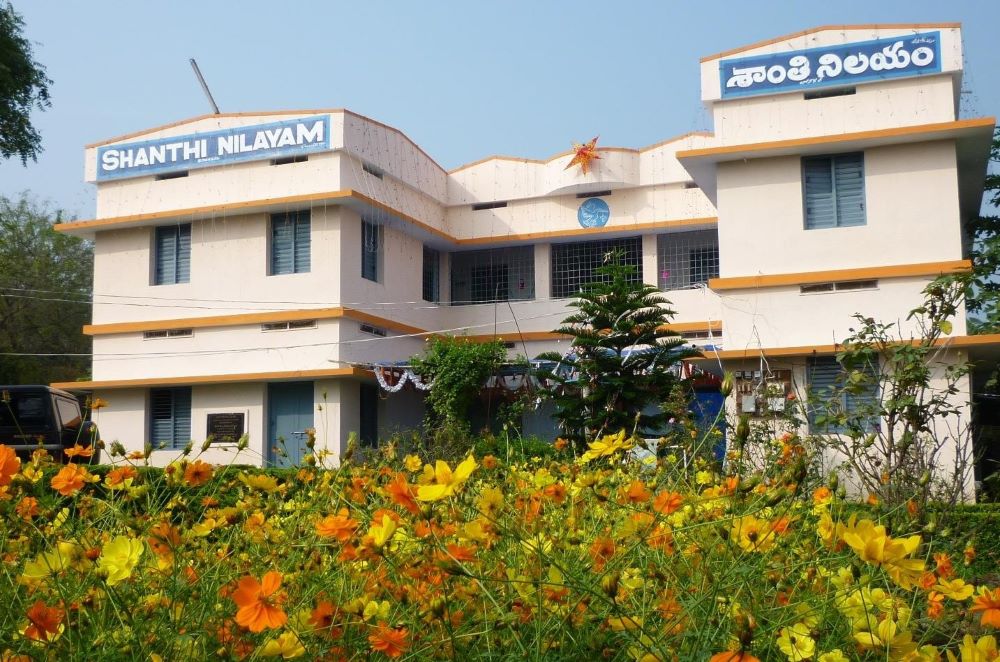
The Sisters of Compassion, a diocesan congregation, started Shanthi Nilayam (House of Peace), a center for mentally and physically disabled children in Telangana state, southeastern India. (Courtesy of Alphie Kidangen)
Finally, in 1999, I told Sister Nirmala I was leaving the congregation. On her advice, I attended a discernment retreat that helped me realize my actual mission was in the villages. Sister Nirmala finally let me go and introduced me to [Diocese of Khammam] Bishop [Paul] Maipan.
How did you develop the village ministry?
Bishop Maipan initially placed me with the Franciscan Clarist sisters to learn the local language and connected me to a parish near Bonakal. From there, I visited Chirunomula, a remote village. Initially, I had a language problem. I wore a saffron sari with a cross, and they called me Amma (mother). Many asked me to pray for them.
Once, a disabled woman invited me to pray for her father with a high fever. I prayed over him, gave him a paracetamol (acetaminophen) tablet and came back. The next morning, the family came and told me the man was healed and had gone to work. It was indeed a miracle. The family gave me a room to stay. I started my mission from that tiny room 25 years ago.
What did you do in the villages?
First, I cleaned it up. The villagers used to defecate on both sides of the road. Every morning, they came with a mug of water to relieve themselves on the roadside. It was horrible to walk on those roads. I pleaded with them to avoid using the road as a public toilet, but no one listened to me. Then, I started cleaning the dirt. I used a piece of slate to collect their stool and dump it far from the road. It was not difficult for me to do so because I had done such things when I was with Mother Teresa. The villagers tried to chase me, but I continued.
Gradually, some young villagers joined me in cleaning the road. I made them dig a pit and drainage. Seeing the youth with me, the villagers started going to the village outskirts for their basic needs. I then visited their houses to convince them about cleanliness to prevent diseases. I also met government officials and got a toilet sanctioned for each family. It took almost three years for all the houses to have separate toilets.
What was your next step?
Working for the disabled. I found several families with mentally and physically disabled children. In some homes, girls with disabilities were treated as a curse and sexually abused.
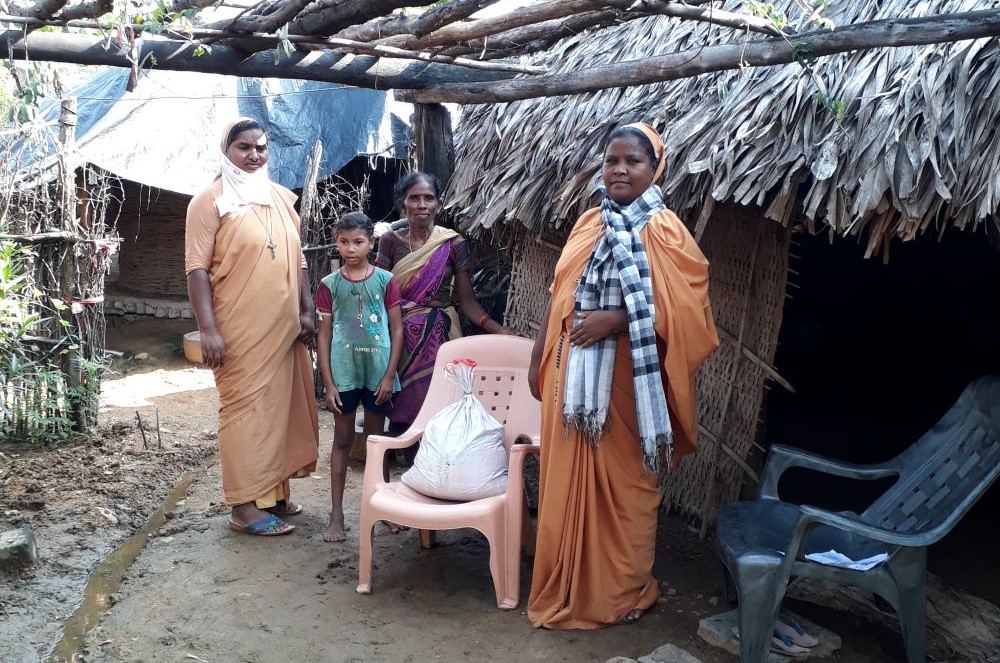
Srs. Josephine Inti and Neelima Tirkey of the Sisters of Compassion, a diocesan congregation in Telangana state, southeastern India, make home visits in Bonakal village. (Courtesy of Alphie Kidangen)
I wanted to open a home for the disabled, especially girls. I met [with] the district administration with the support of Bishop Maipan. After several visits, the officials gave me two acres of government land for the home. I collected some funds and built the home. I named the center Shanthi Nilayam (house of peace) and moved there. Only those children who were abused at home were admitted. I continued to support others in their homes.
How is your center different from Mother Teresa's children's home?
Not many differences. We are guided by the spirit of Mother Teresa's center. However, our focus is community care for children, especially those who were abused. We also stress reuniting these children with their parents.
Our center now cares for 72 children. However, our community care project takes care of hundreds of children and elders.
You spoke about community care. Please explain.
Instead of confining people to an institution, we go to their homes. This outreach program believes in the power of people to solve their problems using community resources. We help them take care of their children at home. By doing so, we prepare families to assert their roles and responsibilities in taking care of themselves and their children.
Advertisement
Why did you start a congregation?
I had developed a small network of young people to assist with my village work. But that was only for external support. One day, Bishop Maipan asked me if I was willing to recruit women and train them to work in the villages. He said the good work I started should not die with me.
When I came to the villages, a girl, Bijili Amarlapudi, said she wanted to become a nun, but her family did not allow her. After the bishop's advice, I asked her if she would work with me. She agreed and adopted my dress code. Thus, the Sisters of Compassion began. She joined me on March 4, 2001. She was 24 then, and I, 33. Bishop Maipan accepted us as a diocesan congregation.
What is the congregation's status now?
We have 20 professed members and four candidates. Living in three communities, we are engaged in community care of the poor, aged, disabled children and the mentally disabled. Some work in Shanthi Nilayam. Most members are from the villages where we work.

